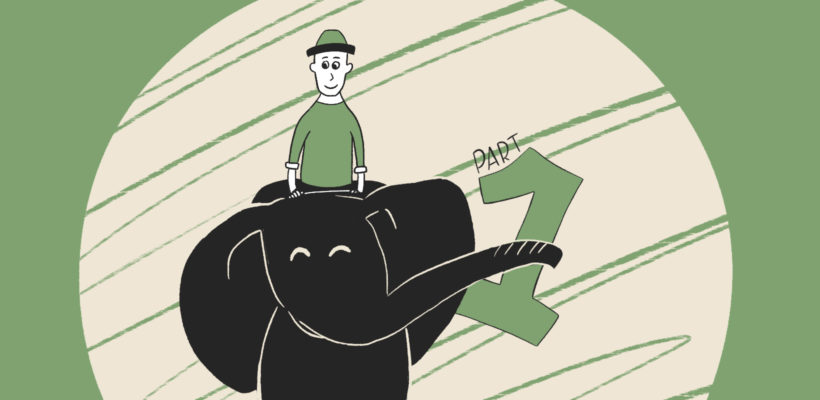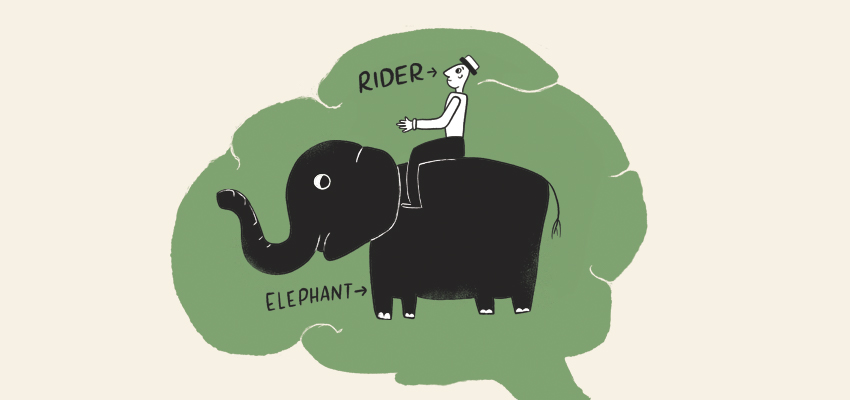
Red Chalk Studios presents our series on buyer, or customer, psychology — what it is, why it matters, and how understanding it can make a powerful difference in your business every day.
Introducing “The Elephant and the Rider” analogy.
Let’s take our first look at this metaphorical mammoth in the room, or in this case, in your business.
In the study of customer psychology, humans are not always logical or rational decision makers. Shocker, we know.
Psychologist Jonathan Haidt has given us a useful way for understanding human decision-making and in understanding there are two mental systems at work as we make choices: the emotional and the rational.
In his analogy, the “elephant” represents our gut feeling, intuition and emotion; and the “rider” represents the system that is responsible for rational thinking.
Basically, the rider can try to guide the elephant, encouraging it to head in a certain direction, but the elephant is the one really making the choices of where to go.

Even if you’ve never ridden an elephant, you can probably imagine that “steering” it is not an easy task. Elephants are big. We mean, BIG. And Elephant is going to do what Elephant wants. Right? And when Elephant takes a right instead of the left you wanted it to take, you’re going to say, “Well, that’s the way I wanted to go, anyway.” That’s human nature.
Let’s apply this to a buying decision…
Say a woman buys a convertible sports car after years of driving her safety-conscious Volvo. She’ll rationalize that it’s because she no longer needs to cart the kids around, so she doesn’t have to be so darn practical. The real reason she buys the car is because it makes her feel young, sexy and anything but someone’s mother.
Human behavior can seem random and irrational, but there are certain elements that can be predicted.
The (Quiet) Language of Elephants
When marketing your business, your services, your products — it is important to “speak to the elephant” and avoid pushing it away.

Because the elephant itself does not voice its intention, it can be a challenge to figure out how to appeal to people’s emotion or their “gut” feelings. The elephant will not appear on a spreadsheet and you can’t chart it.
So how do you figure out how to speak to the elephant?
Great question!
To start, you can glean what drives the elephant by watching behaviors and listening to what people are really saying. Much of the time, you have to read between the lines.
But this isn’t all… We have much more ground to cover in our Understanding Customer Psychology series.
Up next in our Understanding Customer Psychology series: Retain customers by appealing to the elephant.


